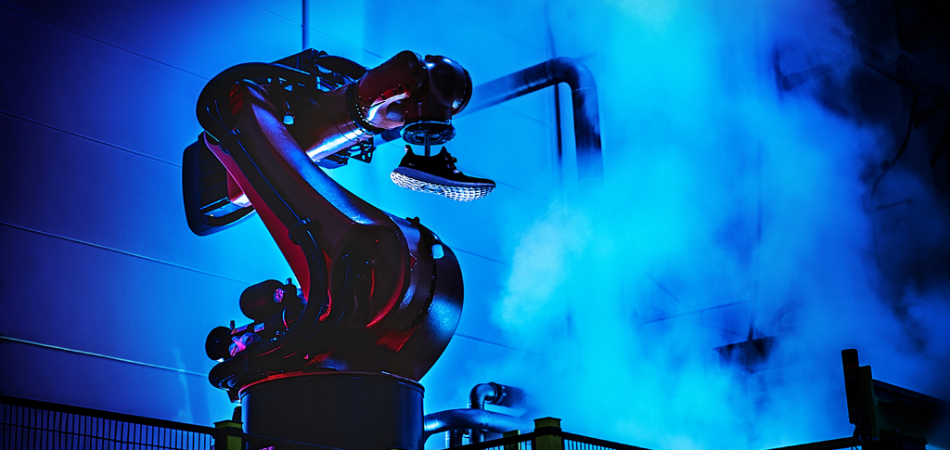
Supporting women through the messy middle of their careers
International Women’s Day may well be over, but progressive agency leaders remain focused on supporting women at every stage of their careers.
In today’s world, personalisation has to be done at speed. Speed equals convenience. And convenience equals a greater number of returning customers. Because ease is all we want. Isn’t it?


In a letter to Amazon’s shareholders in 1997, Jeff Bezos outlined his strategy for the business, saying “Today, online commerce saves customers money and precious time. Tomorrow, through personalisation, online commerce will accelerate the very process of discovery." To date, Amazon has bought 180 companies over the last 10 years; their Amazon Prime service is 12 years old. They are slowly but surely dominating the world of e-commerce.
Amazon doesn’t need to create a streamlined, beautiful online experience; their website doesn’t seem to have changed since its conception. Amazon Prime doesn’t bring you the cheapest option but they’re faster than everyone else. And that’s often all that matters to consumers.
Speed and efficiency are frequently placed above cost and sometimes even ethics. Our expectations are high. When we want something, we expect it, there and then. The retail world of today has created an environment in which companies like Amazon can not only thrive, but begin to monopolise our shopping experience.
But can the brands themselves keep up with our desire to shop on demand? “Manufacturing [is] catching up to the speed of the internet” declared Rowland Manthorpe, an associate editor at Wired UK, as he explored the latest technology behind the adidas Speedfactory, more on which below. Technology is enabling businesses to improve their service design, using data and tech to deliver physical products more quickly and with a greater degree of personalisation.
Personalisation has to be contextual, relevant and appealing. And, in today’s world, it has to be done at speed. Speed equals convenience. And convenience equals a greater number of returning customers. Because ease is all we want. Isn’t it?
There is a strange level of satisfaction that comes from doing laundry. The sorting it out into colours, the smell of it as it comes out. But it is a chore that takes time and effort, two things that can often be in short supply during a busy week.
Enter Laundrapp, an app that lets you outsource your laundry to someone else. If your pile of laundry or ironing basket is overwhelmingly high, you can schedule a driver to pick it up, take it to be cleaned and then drop it back at your home or office. The collection and delivery are free and you can schedule the collection seven days a week.
Laundrapp uses the latest technology in their cleaning processes and each item is quality checked and approved before it leaves. The app allows you to track your clothes while their in transit, so you’ll know when the driver is on their way. You can also store your cleaning preferences for each item on the app.
Recipe worked alongside Laundrapp to launch the campaign entitled You do the living, we’ll do the laundry. The TV ad is filmed in stop motion with the final 30 second film composed of 1,250 individual stills.
The campaign ran on TV and radio and also featured ads on the London Underground, as the majority of the apps users are based there.
Doing laundry is a task that all of us have to do. But Laundrapp have made it just as convenient, if not more so, to outsource this laborious process. So put away the ironing board and start living instead.


The problem with painting a room is that it feels very final. If you’re going to go to the trouble of stripping a wall, putting a base coat on, waiting for each coat to dry and so on, you want to know that the colour is right. But how can you be sure, without actually painting your wall? Webcredible worked alongside Dulux to design an augmented reality app that allows the user to test out paint colours on their walls, virtually. With just two taps on a mobile or tablet screen, one for the colour and then one on the wall, the Dulux Visualiser engages with the key problem at the heart of shopping for paint, that of uncertainty. So, if you like a particular shade of grey, but can’t chose between all fifty of them, well, now you can try them all.


When they slipped behind both Nike and Under Armour in annual sales and popularity, adidas realised they needed to move faster, to innovate quicker and to streamline their process better. So, in 2017, adidas unveiled its Speedfactory in Bavaria, Germany. An automated system, the factory can produce small batch designs for specific markets, cutting the production cycle from months to days. Each pair of shoes that are made in the Speedfactory have their own digital identity, a QR code stamped onto the sole and an NFC chip near the tongue. This allows adidas to collect essential data to enable them to constantly hone and perfect the process. The functionality of the robots also allows for the trainers to be customised by style and fit. While the first Speedfactory was a testing ground for new technology, its success sees seven factory opens expected in 2018.
Looks like you need to create a Creativebrief account to perform this action.
Create account Sign inLooks like you need to create a Creativebrief account to perform this action.
Create account Sign in